Influence of Axial Matching between Inducer and Impeller on Energy Loss in High-Speed Centrifugal Pump
Abstract
:1. Introduction
2. Research Object
2.1. Object Model
2.2. Scheme Design
2.3. Boundary Condition
3. Numerical Method
3.1. Governing Equation
3.1.1. Mass-Conservation Equation
3.1.2. Momentum Conservation Equation
3.2. Turbulence Mode
3.3. Entropy Generation Theory
3.4. Numerical Setup and Grid Validation
4. Results and Discussion
4.1. Performance Curve of High-Speed Pump
4.2. The Variation Law of Inducer Streamline and Turbulent Kinetic Energy
4.3. Analysis of the Distribution of Energy Loss in the Inducer
4.4. Analysis of the Distribution of Energy Loss in the Impeller
5. Conclusions
- Changing the axial position of the inducer between λ = 0.6 and λ = 1.2 will not have a significant impact on the overall performance of the centrifugal pump.
- After analyzing the pressure and turbulent kinetic energy of the inducer, it was found that at a 0.6Qd flow rate, the pressure coefficient increases with the increase of λ at the inducer trailing edge, but the pressure coefficient becomes uniform upon reaching the outlet. There is almost no difference in pressure at the three axial positions at other flow rates. The turbulent kinetic energy in the inlet of the leading edge of the inducer is larger, and the turbulent kinetic energy here gradually decreases with the increase of the flow rate. At the same flow rate, as the axial distance increases, the streamline distribution from the trailing edge of the inducer to the outlet is more uniform, and the vortex in the flow channel develops more fully.
- The energy loss in the inducer mainly occurs at the rim, trailing edge, and outlet near the wall. The entropy generation rate at the trailing edge increases with the increase of the flow rate, resulting in more energy loss. The energy loss at the inducer outlet decreases as the flow rate increases. When the flow rate reaches 1.2Qd, the entropy generation rate drops sharply.
- The energy loss at the interface between the inducer and the impeller, as well as in the impeller, at a 0.6Qd flow rate is significantly larger than at other flow rates. The entropy generation rate in the impeller decreases first and then increases with the increase of flow rate, and the entropy generation rate of the impeller gradually decreases with the increase of the axial distance, except for at a flow rate of 0.6Qd.
Author Contributions
Funding
Institutional Review Board Statement
Informed Consent Statement
Data Availability Statement
Conflicts of Interest
Nomenclature
| Qd | nominal flow rate |
| λ | the ratio of the distance from the trailing edge of the inducer to the impeller inlet and the impeller inlet diameter |
| D1 | impeller inlet diameter |
| p | static pressure |
| ρ | density |
| ε | dissipation rate |
| k | turbulent kinetic energy |
| ω | specific dissipation rate |
| vt | eddy viscosity coefficient |
| uj | velocity component |
| T | Time of one impeller revolution period |
| μ | dynamic viscosity |
| total entropy generation rate | |
| entropy production by average velocity | |
| entropy production by turbulent dissipation |
References
- Gao, Q.; Ye, J.; Wang, B.; Zhao, J. Investigation of Unsteady Pressure Pulsation and Internal Flow in a Centrifugal Pump under Low Flow Rate. Int. J. Fluid Mach. Syst. 2019, 12, 189–199. [Google Scholar] [CrossRef]
- Zhang, Z.; Chen, H.; Yin, J.; Ma, Z.; Gu, Q.; Lu, J.; Liu, H. Unsteady flow characteristics in centrifugal pump based on proper orthogonal decomposition method. Phys. Fluids 2021, 33, 075122. [Google Scholar] [CrossRef]
- Zhang, H.; Dong, W.; Chen, D. Numerical analysis of the flow mechanism and axial force characteristics of the cavity in a centrifugal pump with a front inducer. J. Vibroeng. 2020, 22, 1210–1227. [Google Scholar] [CrossRef]
- Zhang, X.-Y.; Jiang, C.-X.; Lv, S.; Wang, X.; Yu, T.; Jian, J.; Shuai, Z.-J.; Li, W.-Y. Clocking effect of outlet RGVs on hydrodynamic characteristics in a centrifugal pump with an inlet inducer by CFD method. Eng. Appl. Comp. Fluid 2021, 15, 222–235. [Google Scholar] [CrossRef]
- Mihalic, T.; Kondic, Z.; Medic, S.; Kondic, V. Experimental and Numerical Investigation of Centrifugal Vortex Pump Operating Benefits for Energy Efficient Systems. Teh. Vjesn. 2020, 27, 1519–1523. [Google Scholar] [CrossRef]
- Shigemitsu, T.; Ogawa, Y.; Nakaishi, E. PIV Measurement of Internal Flow in Mini Centrifugal Pump. Int. J. Fluid Mach. Syst. 2019, 12, 251–260. [Google Scholar] [CrossRef]
- Shen, Z.; Chu, W.; Yan, S.; Chen, X.; Guo, Z.; Zhong, Y. Study of the performance and internal flow in centrifugal pump with grooved volute casing. Mod. Phys. Lett. B 2020, 34, 2050268. [Google Scholar] [CrossRef]
- Wang, L.-K.; Lu, J.-L.; Liao, W.-L.; Guo, P.-C.; Feng, J.-J.; Luo, X.-Q.; Wang, W. Numerical investigation of the effect of T-shaped blade on the energy performance improvement of a semi-open centrifugal pump. J. Hydrodyn. 2021, 33, 736–746. [Google Scholar] [CrossRef]
- Wang, C.N.; Yang, F.C.; Nguyen, V.T.T.; Vo, N.T.M. CFD Analysis and Optimum Design for a Centrifugal Pump Using an Effectively Artificial Intelligent Algorithm. Micromachines 2022, 13, 1208. [Google Scholar] [CrossRef] [PubMed]
- Nguyen, V.T.T.; Vo, T.M.N. Centrifugal Pump Design: An Optimization. Eurasia Proc. Sci. Technol. Eng. Math. 2022, 17, 136–151. [Google Scholar] [CrossRef]
- Jia, X.-Q.; Zhu, Z.-C.; Yu, X.-L.; Zhang, Y.-L. Internal unsteady flow characteristics of centrifugal pump based on entropy generation rate and vibration energy. Proc. Inst. Mech. Eng. Part E J. Process Mech. Eng. 2019, 233, 456–473. [Google Scholar] [CrossRef]
- Qian, B.; Chen, J.-P.; Wu, P.; Wu, D.-Z.; Yan, P.; Li, S.-Y. Investigation on inner flow quality assessment of centrifugal pump based on Euler head and entropy production analysis. In Proceedings of the 29th IAHR Symposium on Hydraulic Machinery and Systems (IAHR), Kyoto, Japan, 17–21 September 2018. [Google Scholar]
- Zhao, X.; Luo, Y.; Wang, Z.; Xiao, Y.; Avellan, F. Unsteady Flow Numerical Simulations on Internal Energy Dissipation for a Low-Head Centrifugal Pump at Part-Load Operating Conditions. Energies 2019, 12, 2013. [Google Scholar] [CrossRef]
- Yang, B.; Li, B.; Chen, H.; Liu, Z. Entropy production analysis for the clocking effect between inducer and impeller in a high-speed centrifugal pump. Proc. Inst. Mech. Eng. Part C J. Mech. Eng. Sci. 2019, 233, 5302–5315. [Google Scholar] [CrossRef]
- Guan, H.; Jiang, W.; Wang, Y.; Hou, G.; Zhu, X.; Tian, H.; Deng, H. Effect of vaned diffuser clocking position on hydraulic performance and pressure pulsation of centrifugal pump. Proc. Inst. Mech. Eng. Part A J. Power Energy 2021, 235, 687–699. [Google Scholar] [CrossRef]
- Yuan, Z.; Zhang, Y.; Wang, C.; Lu, B. Study on characteristics of vortex structures and irreversible losses in the centrifugal pump. Proc. Inst. Mech. Eng. Part A J. Power Energy 2021, 235, 1080–1093. [Google Scholar] [CrossRef]
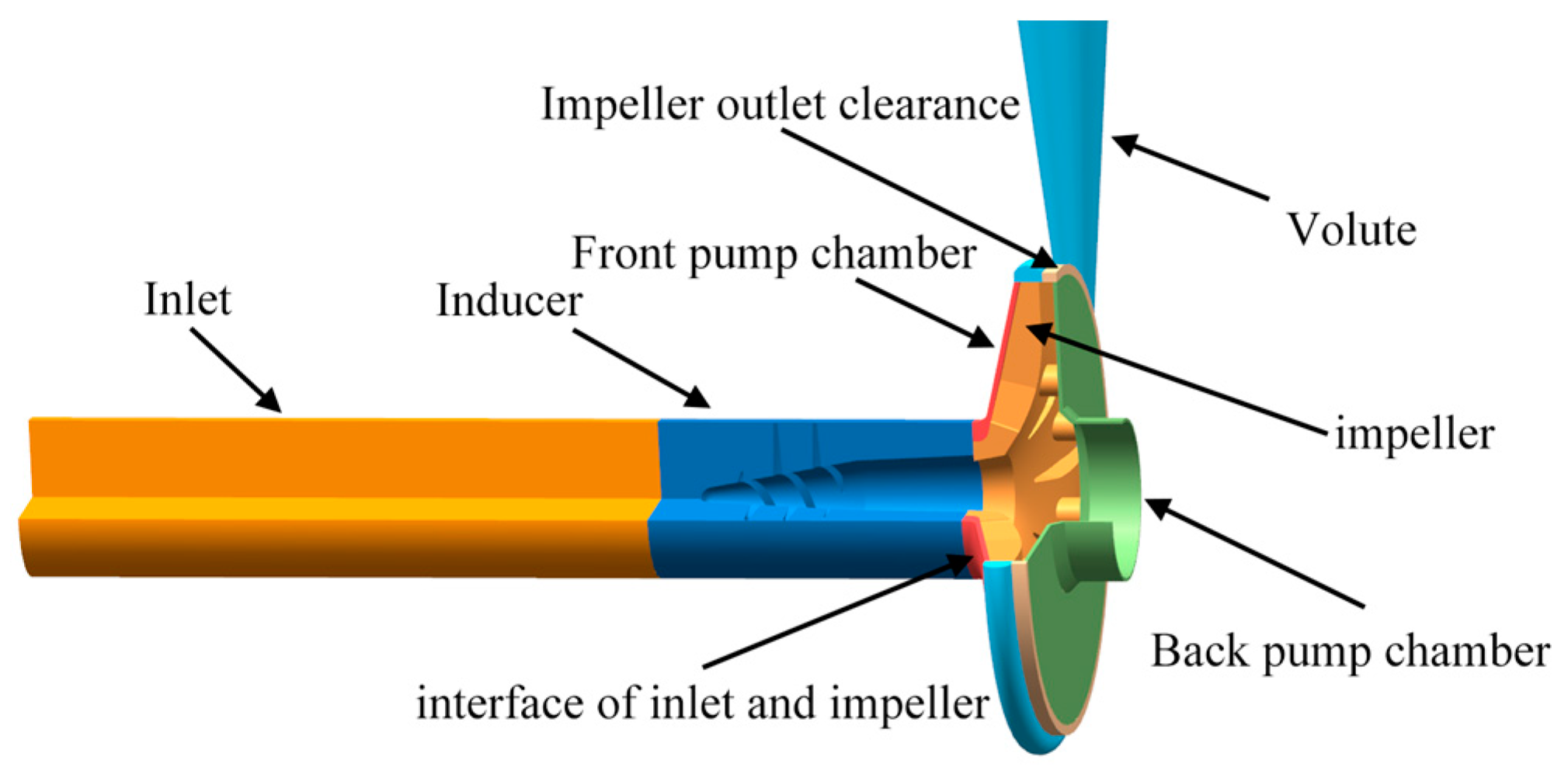
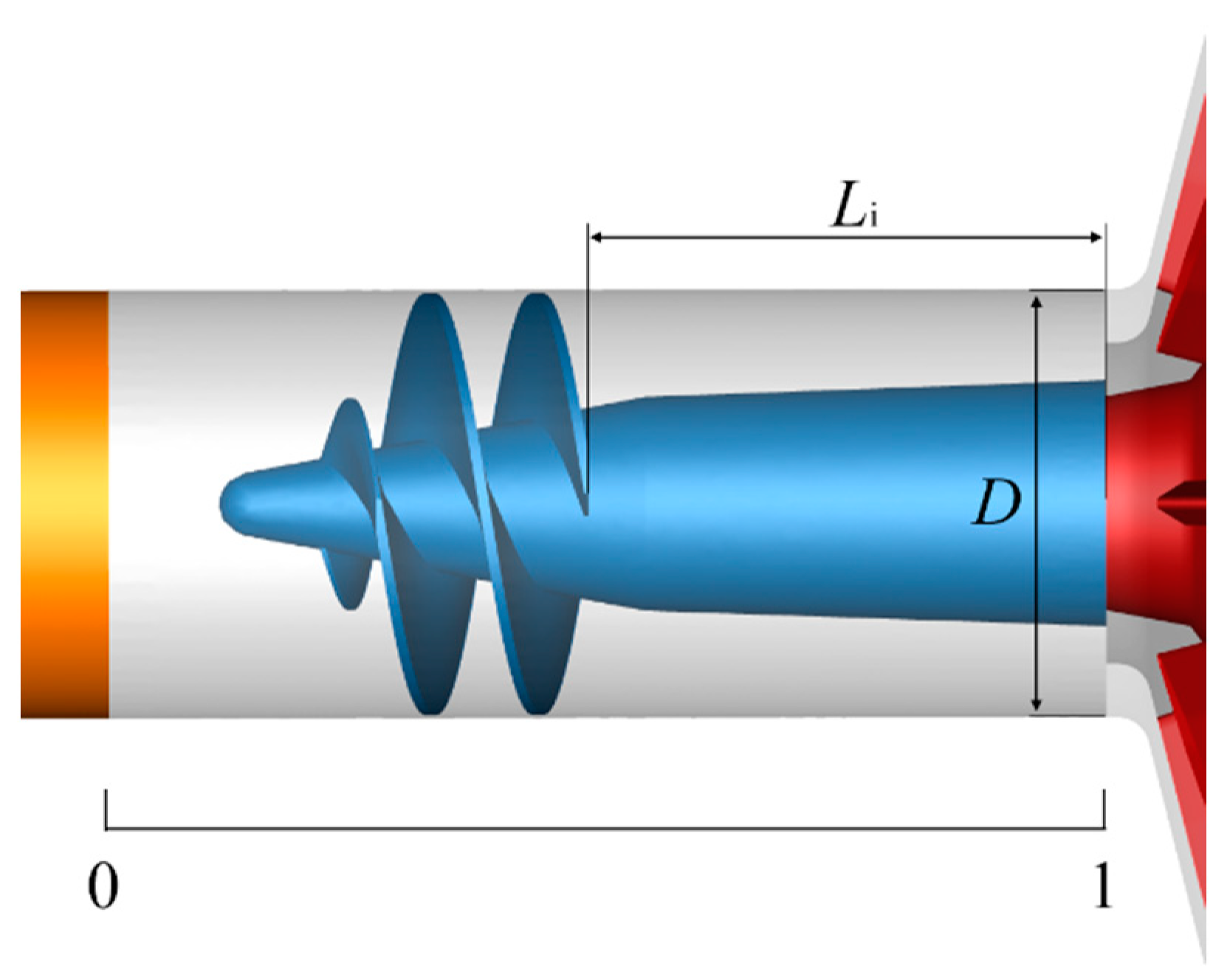
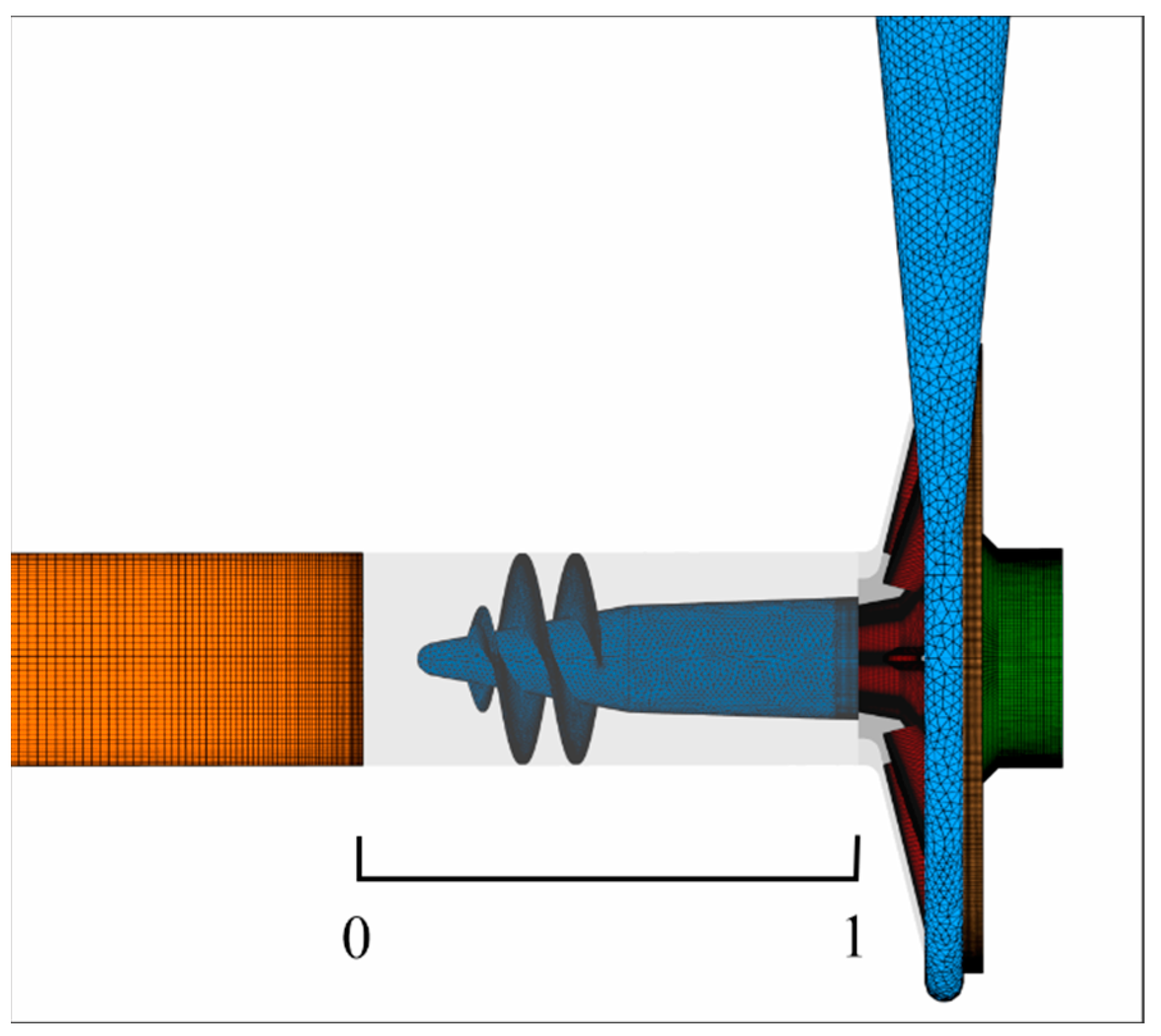

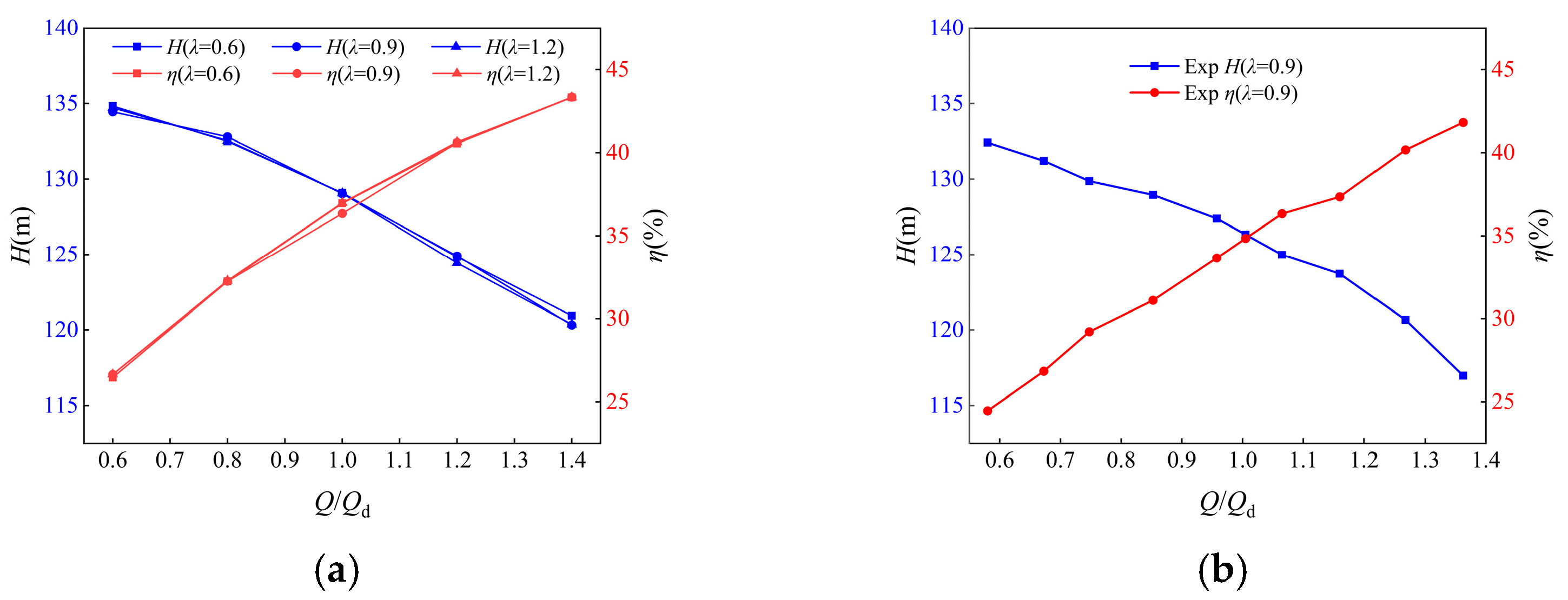






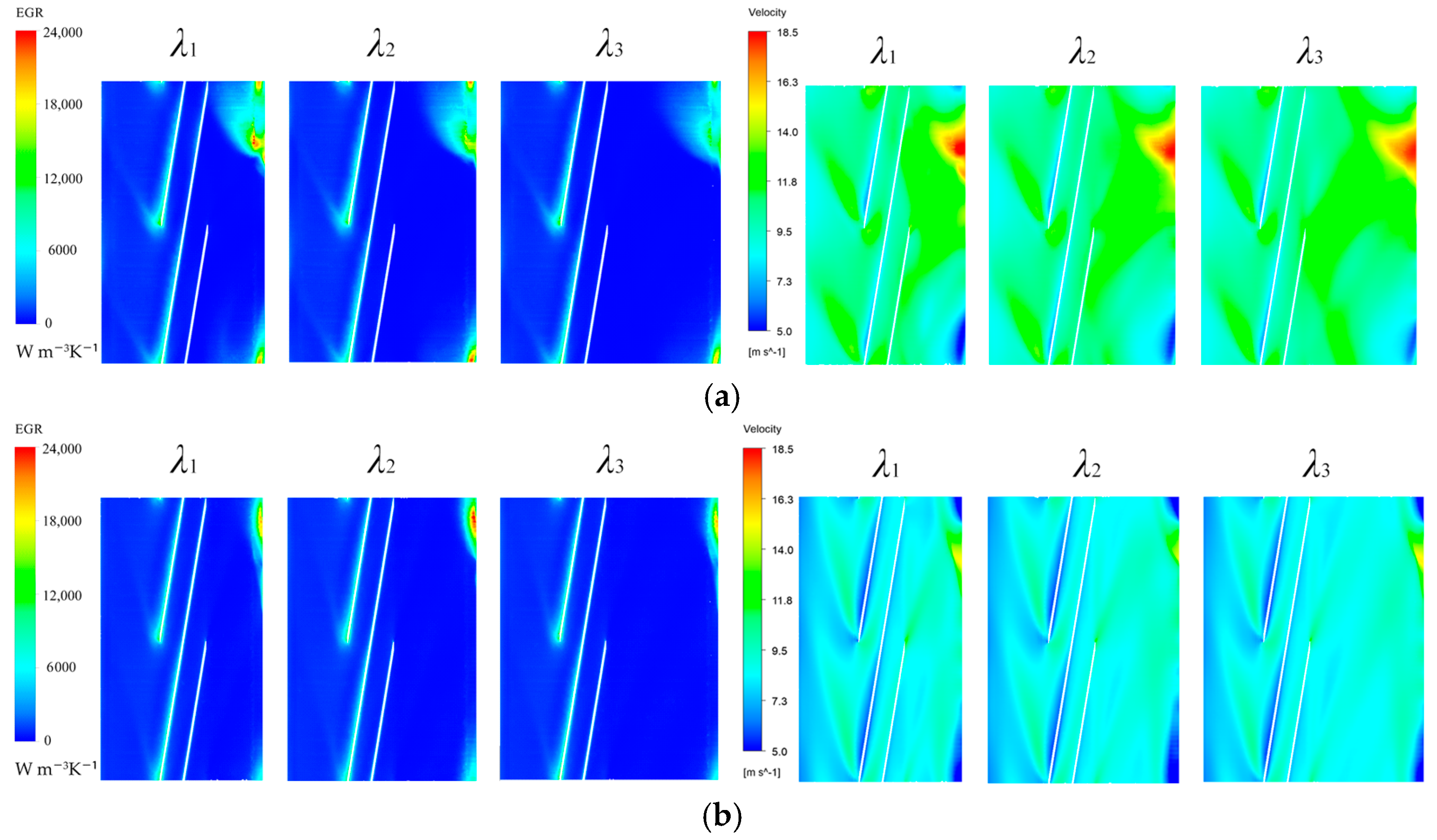
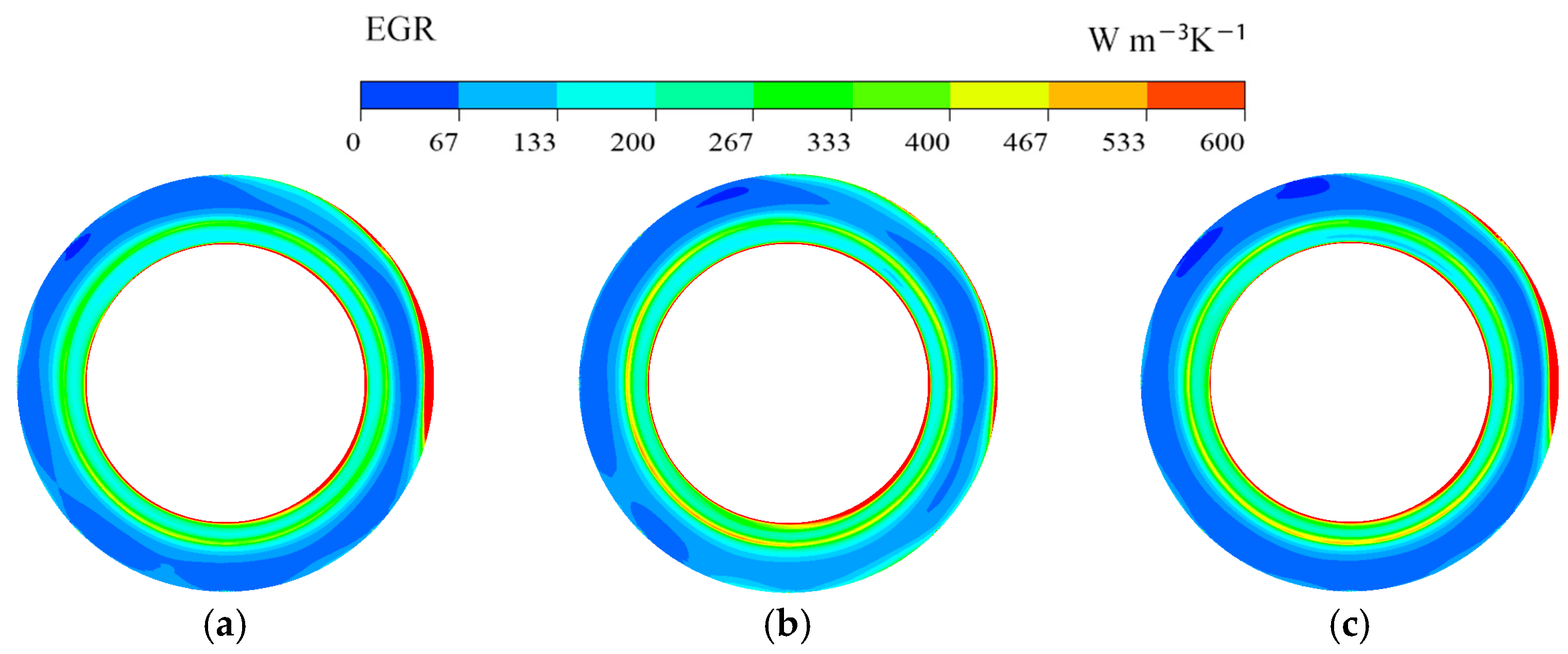
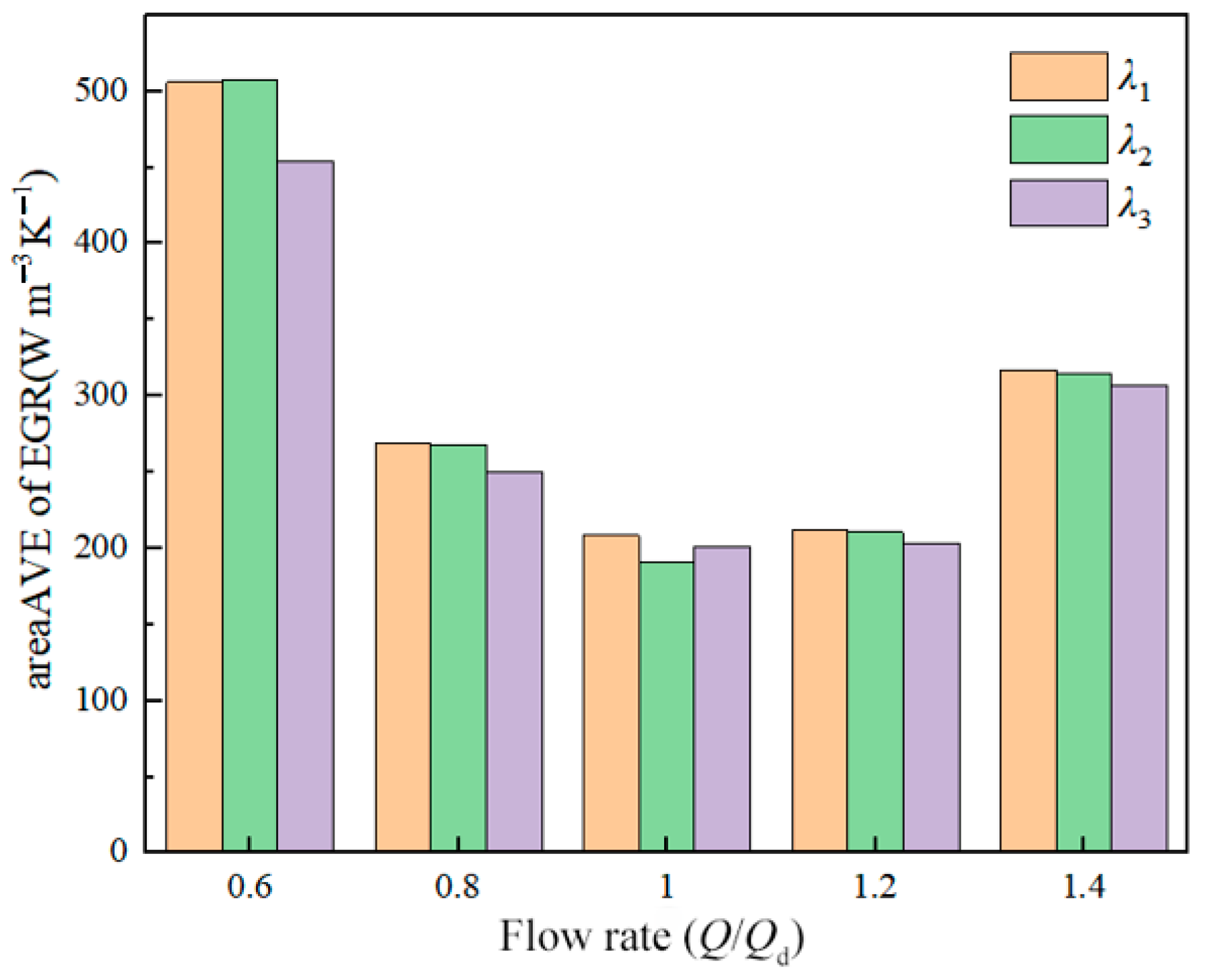
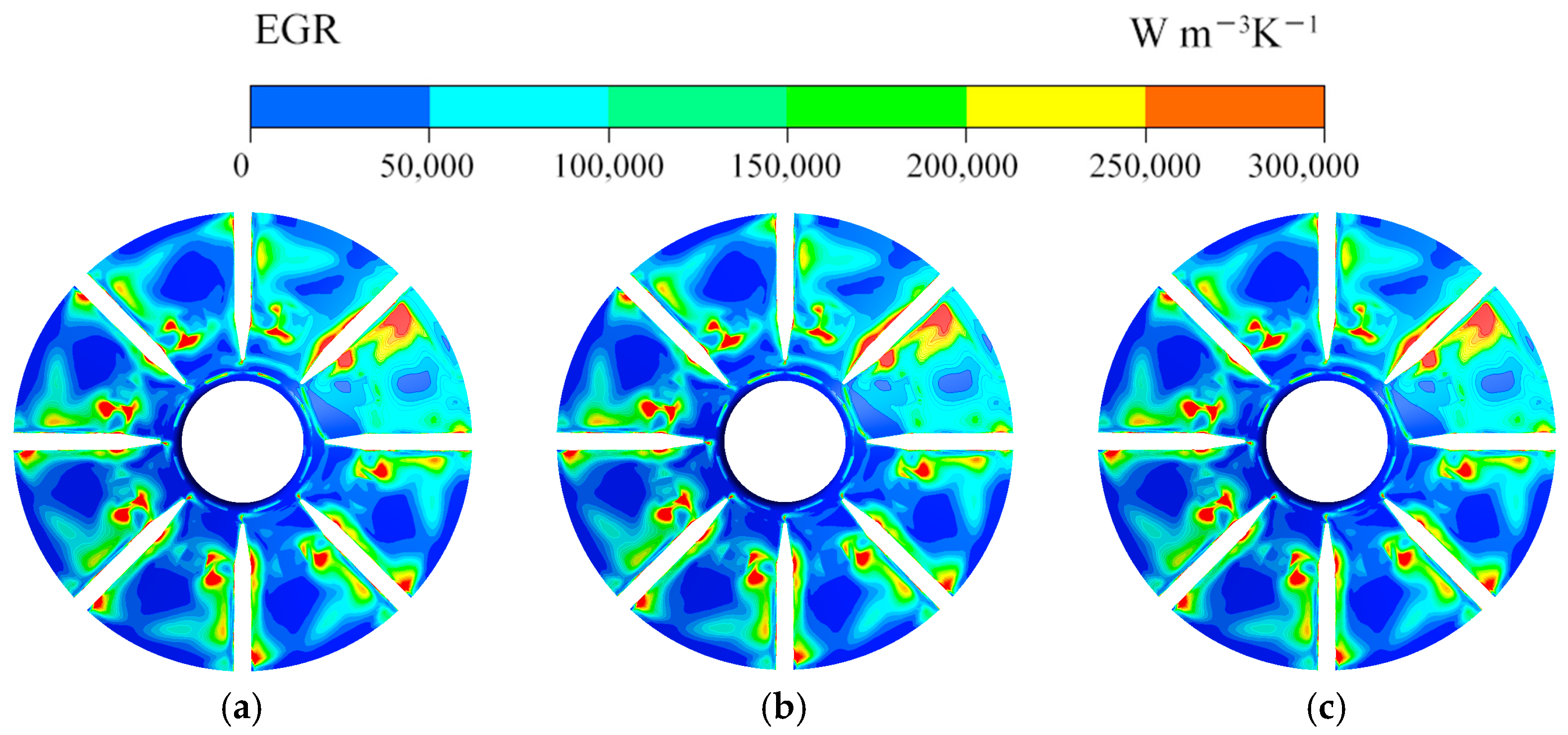

| Parameter | Value |
|---|---|
| Design rotational speed (r/min) | 7081 |
| Number of blades (sheet) | 2 |
| Tip diameter (mm) | 39.4 |
| Sweepback angle of leading edge (deg) | 120 |
| Inlet hub diameter (mm) | 8 |
| Outlet hub diameter (mm) | 20 |
| Axial length (mm) | 26.4 |
Disclaimer/Publisher’s Note: The statements, opinions and data contained in all publications are solely those of the individual author(s) and contributor(s) and not of MDPI and/or the editor(s). MDPI and/or the editor(s) disclaim responsibility for any injury to people or property resulting from any ideas, methods, instructions or products referred to in the content. |
© 2023 by the authors. Licensee MDPI, Basel, Switzerland. This article is an open access article distributed under the terms and conditions of the Creative Commons Attribution (CC BY) license (https://creativecommons.org/licenses/by/4.0/).
Share and Cite
Cui, B.; Li, C. Influence of Axial Matching between Inducer and Impeller on Energy Loss in High-Speed Centrifugal Pump. J. Mar. Sci. Eng. 2023, 11, 940. https://doi.org/10.3390/jmse11050940
Cui B, Li C. Influence of Axial Matching between Inducer and Impeller on Energy Loss in High-Speed Centrifugal Pump. Journal of Marine Science and Engineering. 2023; 11(5):940. https://doi.org/10.3390/jmse11050940
Chicago/Turabian StyleCui, Baoling, and Chaofan Li. 2023. "Influence of Axial Matching between Inducer and Impeller on Energy Loss in High-Speed Centrifugal Pump" Journal of Marine Science and Engineering 11, no. 5: 940. https://doi.org/10.3390/jmse11050940






